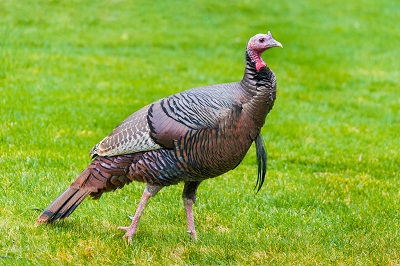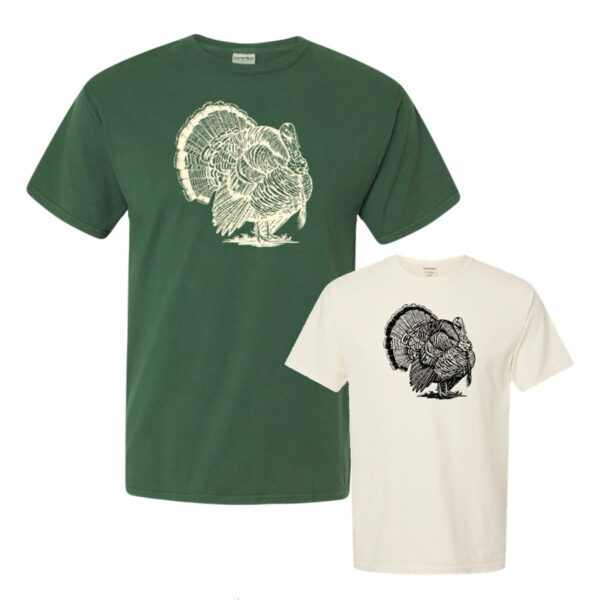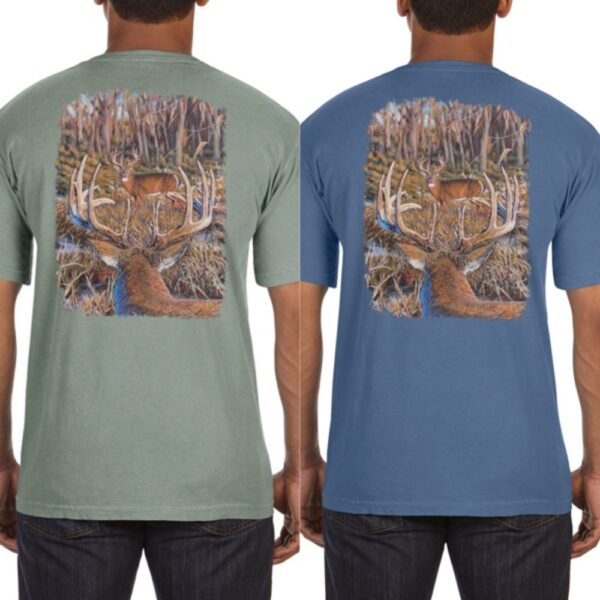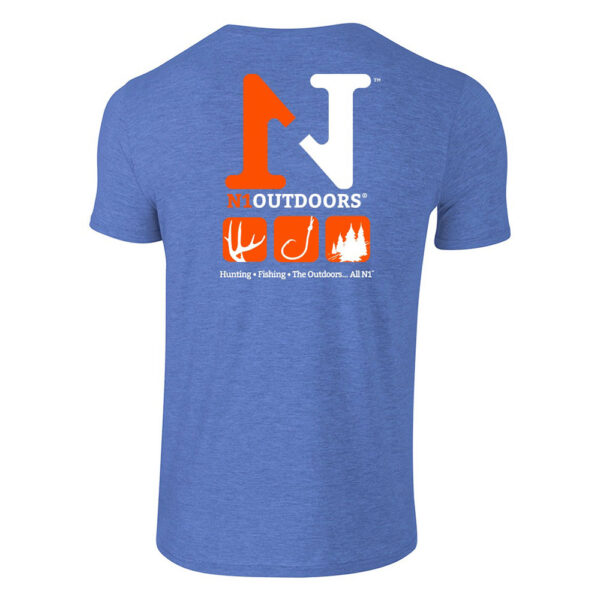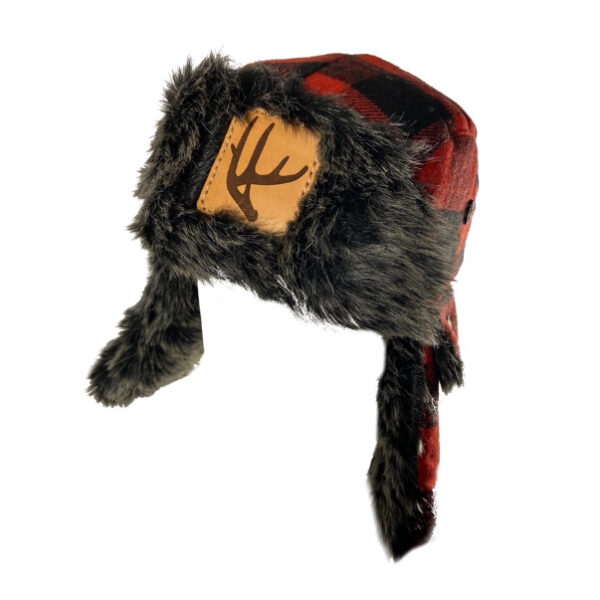The wild turkey is a complex creature and has some anatomical features that are pretty peculiar. Many hunters may not know what some of these features are and how they help a turkey survive in nature.
So, let’s take a closer look at the anatomy of the wild turkey.
Eyes
If you are an avid turkey hunter, you are likely aware that this bird sports some powerful eyesight and can detect a turkey hunter with ease if they are not properly concealed and camouflaged.
Unlike us human hunters, the wild turkey possesses monocular periscope vision.
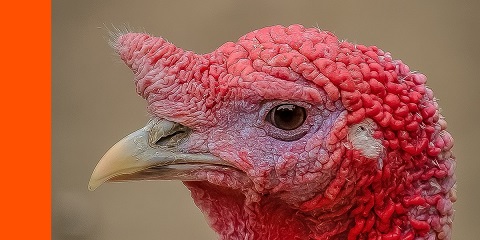
Turkeys have powerful eyesight, nearly a 360-degree field of vision, and each eye can move independently of the other.
Monocular periscope vision allows the eyes of the turkey to act independently from one another, allowing them to scan for potential threats in two different directions simultaneously.
Turkeys also have eyes situated on the sides of their head and not in a forward-facing direction. The positioning of the eyes and the independent operation they are capable of means that turkeys have nearly 360 degrees of viewing range.
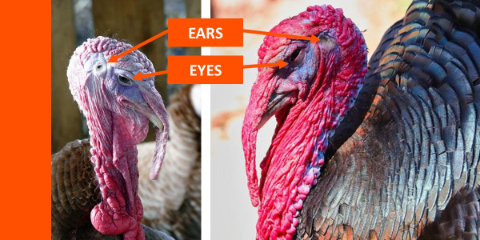
The ears of a turkey are located right behind the eyes.
The eyes being able to scan so much of the immediate area around them means they can pick up the slightest movements with ease and is one of the reasons they are so challenging to hunt.
Ears
Like all birds, the turkey doesn’t have any external ear features, and their ears are essential, just holes in their head directly behind their eyes.
The ears of the turkey feature pinpoint hearing, and if you have ever called in a turkey from a long distance, you will have observed how they can pinpoint the exact location of the sound and track directly to you.
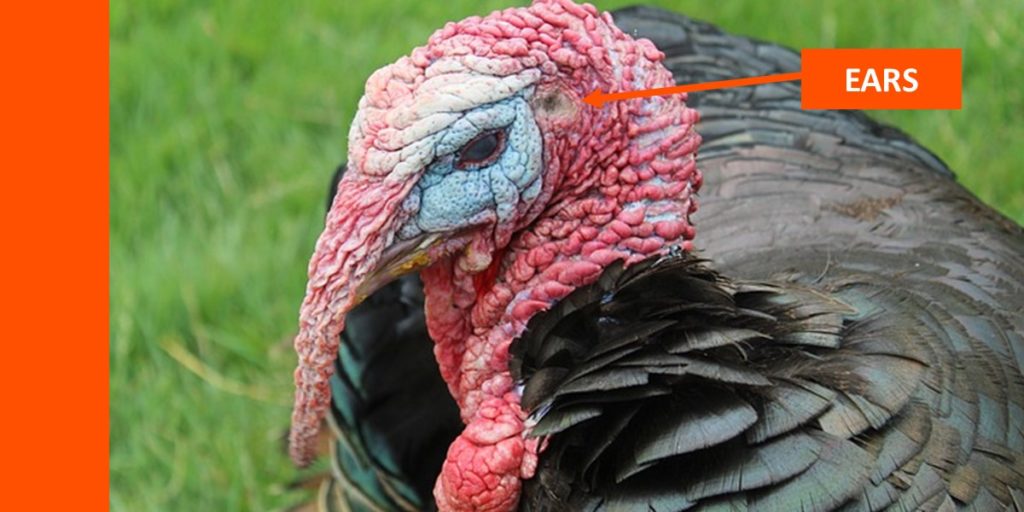
Turkey’s have an uncanny ability to judge distance with their ears.
Despite not having external ears that serve as a sort of “radar dish” to detect noises from a wide range of directions like a deer, the turkey has hearing that can easily pinpoint the exact location of noise, and their brains will even register the distance of the sound from the bird.
Snood
The snood is an anatomical feature that a turkey possesses that causes most hunters to scratch their heads and ask, “what is that thing for?”
The most noticeable feature which has the fitting name of a snood is the familiar bright red lumpy area located on the throats of male turkeys.
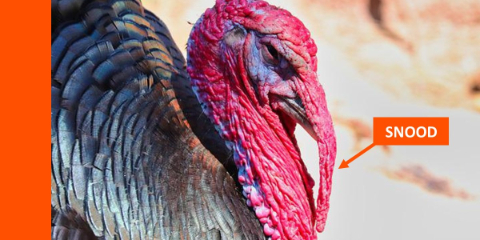
A turkey’s snood helps to regulate body temperature, and in males, help to attract female turkeys (hens).
The snood serves a few different purposes for male turkeys, with the biggest being attraction to the opposite sex, with the bright ornamentation helping attract females for breeding.
This weird anatomical feature also serves another critical role for tom turkeys. It helps dissipate excess heat and helps regulate the bird’s body temperature on those hot summer days.
Head Coloration
The colorations of the head of a male wild turkey are to this day not fully understood, and the colors can change depending on the bird’s mood.
The Coloration of the head can change from blue to white to red, and the bird can do so based on moods like agitation, excitement, irritation, fear, and others.
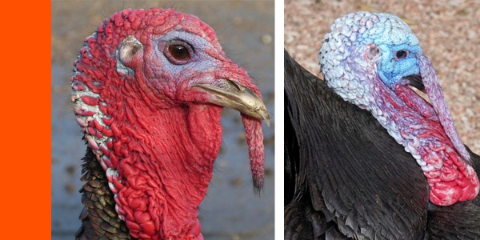
A turkey’s head colors can change, depending on factors like fear, anger and during mating.
When it comes to mating, there will often be a prominent white coloration at the top of the head, and this occurs when a tom is approaching hens or, in many cases, a hunter or decoy that the tom thinks is a hen.
Beard
The beard of a tom turkey serves the same purpose as the coloration and snood, to attract hens. The beard of a tom turkey isn’t actually a beard at all but a modified form of a feather.
While males use it to attract hens, hen turkeys are also known to sport a beard, albeit on a rare basis. This has led some experts to not definitely hold the beard as a definitive in terms of its’ role.
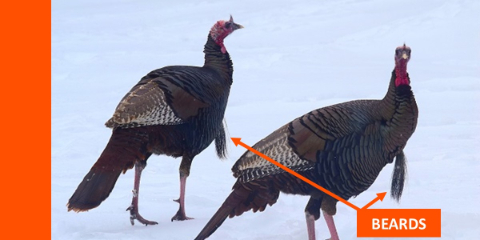
The beard of a make turkey has a texture similar to a thick monofilament fishing line, and is used to attract hens.
Spurs
One of the anatomical features of a turkey that is a trophy feature among hunters are the spurs.
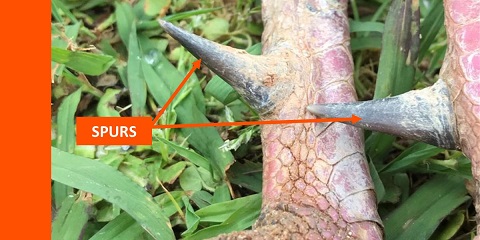
A turkey grows spurs on the back of each leg near the foot, and can be used for defense as well as for fighting.
The spurs serve two primary purposes for a tom turkey; it is the major form of defense for the bird, and hunters try to avoid them when retrieving a recently downed bird for this very reason.
Tom turkeys also use these spurs to fight other toms for the same reasons bucks or rams fight, to establish a hierarchy within the flock, as turkeys are social animals.
Just like the antlers of a buck, the spurs of a tom turkey can cause severe lacerations, cuts, and bruising, so be cautious when approaching a wounded tom.
Tail Feathers
The tail feathers are probably the most prized feature of a tom turkey among hunters, and both hunters and toms love to display them.
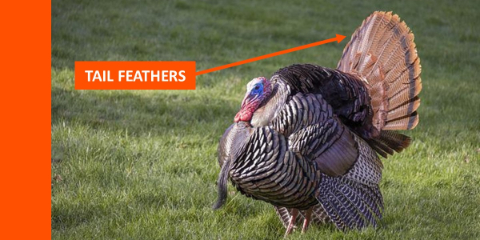
A turkey’s tail feathers are the prize possession of turkey hunters.
The tail fan of a turkey serves a few purposes; it makes them look larger when they are fully displayed, which serves as a form of intimidation to other toms when fighting during the mating season and attracts hens.
The large tail feathers also serve as a rudder when flying, helping the bird control their direction of flight and helping them brake and slow down when they come in for a landing or when roosting in the trees at night.
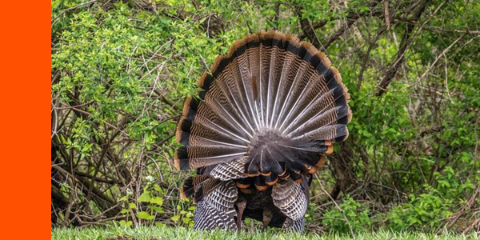
Here’s a look at a turkey’s tail feathers from behind the bird.
Wings
Unlike other birds, a turkey will rarely use flight to simply get around due to being a relatively heavy bird and use flight for the purposes of getting up into trees for roosting and back down again.
But don’t be fooled, as a threatened turkey can kick into high gear and escape nearly any potential threat quickly by flying fast and low, albeit in relatively short bursts compared to other birds.
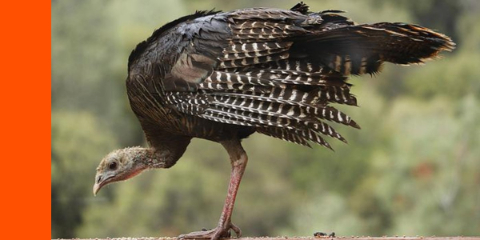
Although turkeys can fly, their wings are used primarily to fly up and down from their roosting locations.
The wings also serve a purpose in establishing dominance in the flock hierarchy, with “wing slapping” being a common way for toms to fight and work their way to the top of the pecking order.
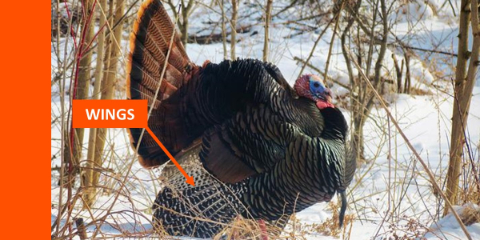
during mating season, a male turkey will often “strut” with it’s tail feathers up and its wings pointed in a downward fashion
Wings also come in handy for dusting, which is when a turkey wallows down into dry dirt and ruffles its feathers to spread a fine powdery coat of dust on itself.
Dust baths keep the feathers of the turkey in optimum condition and are a part of their preening and plumbing maintenance, as the dust absorbs excess oils and moisture.
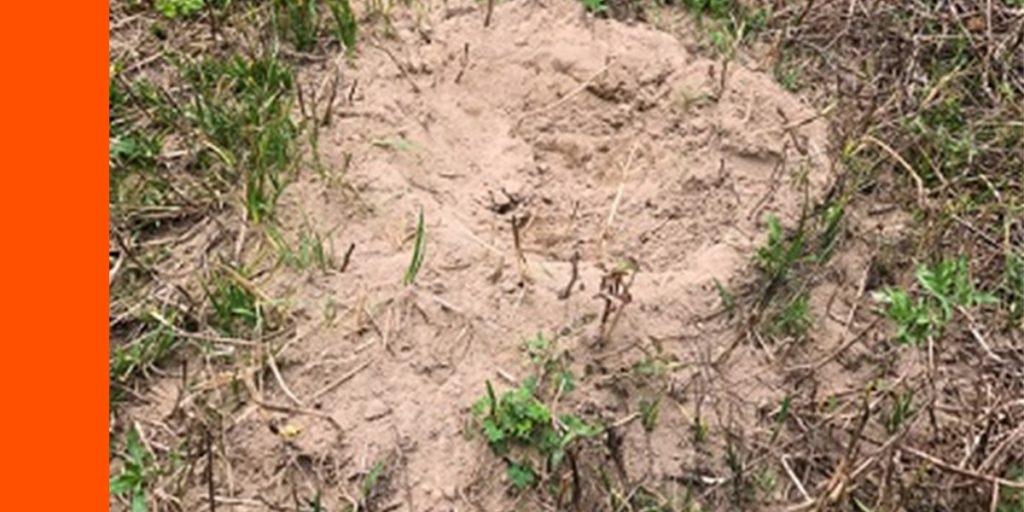
A turkey will “dust” its feathers, in an area like this, to keep their wings from being matted and to help prevent parasites and mites.
Dusting keeps the feathers of the bird from becoming matted and greasy and provides clean and aerodynamic feathers for maximum efficiency during flight, and also helps prevent feather mites and parasites.
Final Thoughts On Turkey Anatomy
The turkey is a very intriguing animal and a great resource for hunters.
Understanding details about the animals you pursue in the field will help you become a better hunter and will also give hunters a larger appreciation and understanding of the resources they enjoy.
So, whether you are a turkey hunter of just wanting to learn more about these amazing birds, we hope this article on the anatomy of a turkey helped you understand these amazing birds better!

